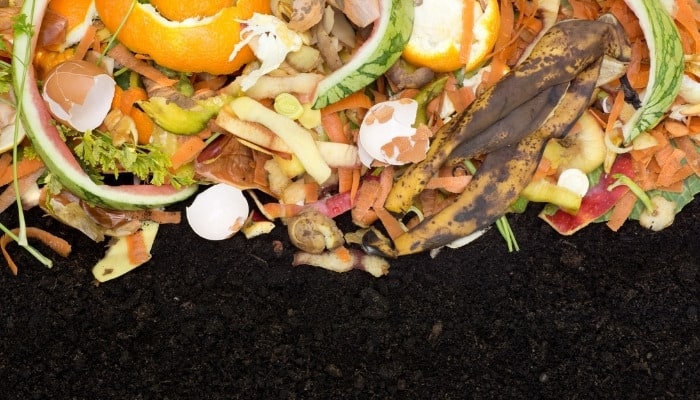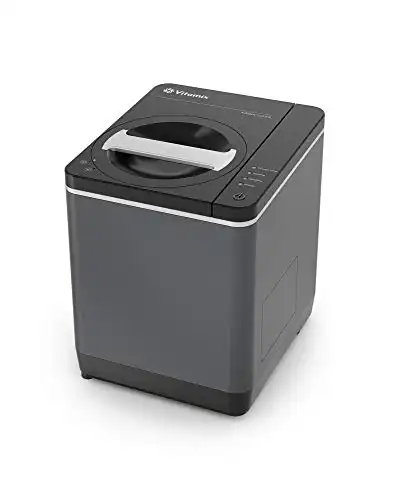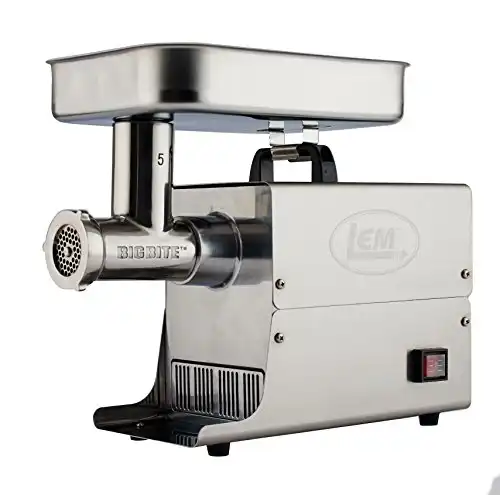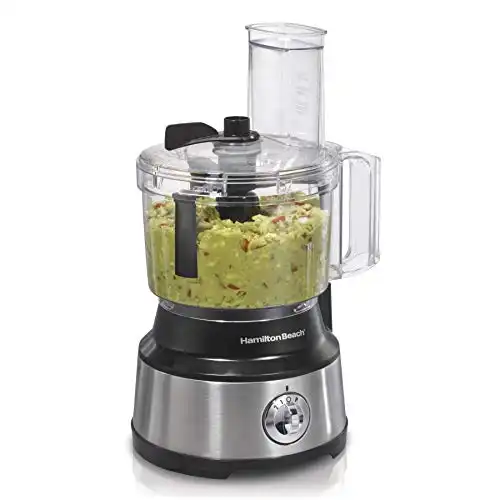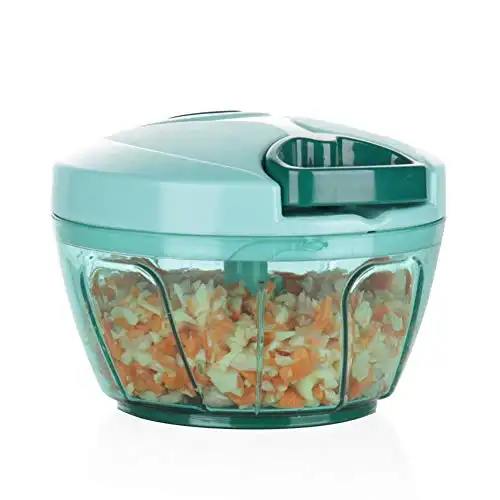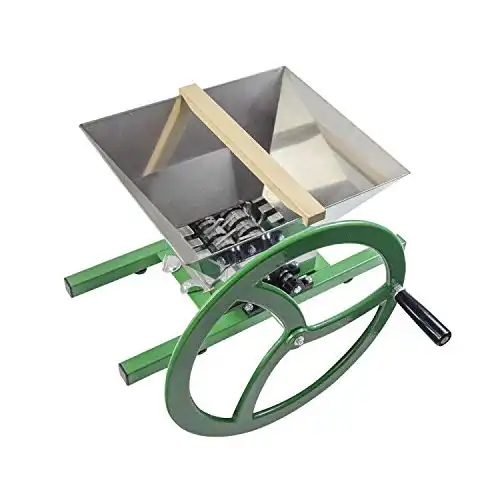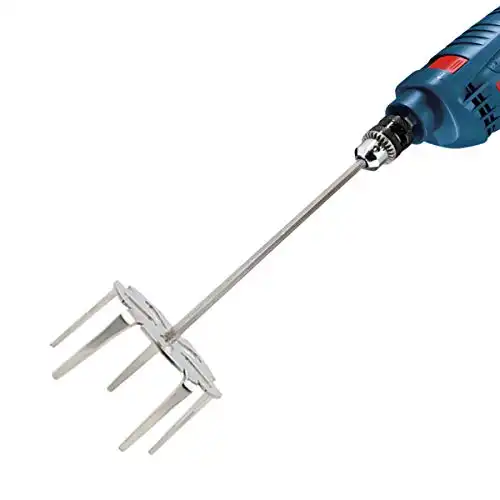The process of composting can take anywhere from 2 weeks to 2 years before it fully decomposes.
Factors like the ratio of green to brown materials, regularly turning the pile, and temperatures all impact how long it takes to break down.
However, you can speed things along with the help of a compost grinder – but what do these do exactly?
What does a compost grinder do? A compost grinder shreds and crushes food scraps and other waste materials into smaller particles. When this composting material is ground into a finer texture, it increases the surface area for microorganisms to feed upon the pile, accelerating the decomposition process.
All compost will eventually break down, but enlisting the help of a compost grinder helps demolish resistant materials like eggshells and bones that worms and other compost-feeders won’t touch.
Let’s find out how compost grinders work, plus a Buyer’s Guide and our 6 best products to try…
Compost Grinders – What To Know
There are different ways of breaking down your kitchen and yard waste, and you don’t need a bulky piece of outdoor machinery to do so.
Let’s look at the hows, whys, and various methods of compost grinding…
How Do You Grind Compost?
Compost can be added in small batches or all at once depending on the size of the grinder.
You can simply place your compost portions in a compost-grinding appliance, which may be a smart kitchen-top grinder, a meat grinder, or larger compost bins and yard shredders for tackling large volumes.
You can also grind up almost-finished compost to help complete the process faster.
Remember that before you actually use the material in your garden, your compost pile will need to have fully cured first.
You’ll know your compost is ready when it appears and smells like rich earth rather than putrid, rotting food. (Here are some great tips for speeding up the curing process!)
Should You Grind Compost?
Grinding compost isn’t strictly necessary, but it makes the process a lot smoother (literally and figuratively!).
If you require regular compost or you often use harder waste materials that could benefit from faster decomposition – i.e. twigs over softer food scraps/grass clippings – then compost grinding can be a worthwhile step in providing you with finer ready-to-use fertilizer more quickly.
Advantages To Using a Compost Grinder
In addition to speeding up the decomposition process by increasing the surface area for helpful microorganisms to feed, the smaller particles created by compost grinding promotes greater insulation within the pile, helping reach optimum temperatures, according to the EPA.
In turn, this optimum temperature range (135-160°F) helps kill off weed seeds and pathogens, creating a more sterile soil amendment for your garden.
Another great benefit is the environmental impact. According to FoodCycler, electric compost grinders can cut down food waste volume by up to 90%, helping you to compost more and significantly reduce the amount sent to landfills.
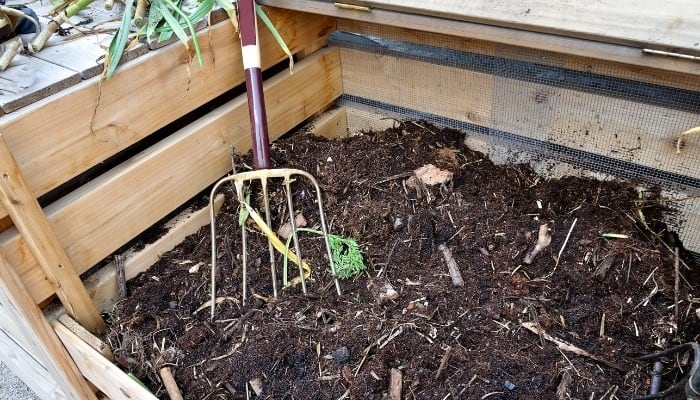
Can You Use a Meat Grinder for Compost?
Yes, using a manual hand-cranked meat grinder can be a good alternative if you want to save electricity, and it has the advantage of being able to be used directly outside in your yard if you choose.
Most meat grinders will grind up fruit and vegetable matter as well as small fine bones from chickens and ducks.
Although the ground result will not be as fine as using a grinder/shredder with rotary blades, this is still a viable option.
Can You Use a Wood Chipper To Make Compost?
It is possible to compost using a wood chipper, but it’s likely to clog before long.
These are designed to turn large tree branches into manageable wood chips, but adding smaller soft waste materials with higher moisture content, such as food scraps, can risk damaging the mechanism.
Can You Use a Food Processor To Shred Compost?
Yes! Food processors make very convenient compost shredders if you’re looking to use smaller amounts, and you can often buy add-on bowls and more powerful blade attachments for more precise results.
Blender Composting
Blenders combine water with food materials, which is ideal for making compost as you are left with a nutrient-rich liquid fertilizer that can be poured directly into the soil!
Blender composting has even been recommended by New Mexico State University since the reduced particle size facilitates decomposition in winter.
Just be sure that the excess water drains easily from your compost pile to prevent a soggy, foul-smelling pile.
Is a Compost Grinder the Same as a Compost Shredder?
No. Compost shredders are typically heavy-duty wood chippers/shredders designed solely for outdoor use and to break down “brown” compost materials such as large tree branches and limbs, whereas compost grinders are smaller home appliances suited to softer “green” waste materials and produce a finer end product.
Tips for Grinding Compost
- Chop larger chunks and bulky pieces into a more manageable size.
- Ensure your compost is made up of a ratio of 3 parts brown: 1 part green waste – this ensures the pile won’t be overly acidic since high acidity will prevent a fine-textured end product.
What To Look for in a Compost Grinder – Buyer’s Guide
Before investing in a compost grinding buddy, consider the features most appropriate for your use – How much do you intend to compost? Are you bothered by noise levels? Etc.
Quality Manufacturing
Check that the grinder is made from durable rust- and UV-resistant material (especially if you plan to use it outdoors).
Also, look for products that are EPA or CARB-certified, which regulate air pollution/air quality nationally and in California respectively.
Size
Grinders come in different sizes and capacities, so consider the space in your home/outdoor composting area and whether you need to fertilizer a large or modest garden area.
Convenience
Opt for a grinder that’s light and easy to transport around your yard.
Also, look for designs with suitably sized openings/doors to make loading and unloading your compost easy and relatively mess free.
Noise Level
Small kitchen-top grinders will be fairly quiet while meat grinders and drill attachments can be pretty noisy and could be considered noise pollution to your home and neighbors!
Most Popular Compost Grinders
Whether you’d prefer to grind your compost in your kitchen or tackle large volumes outside, here’s our pick of compost grinders to suit all uses and budgets:
1. Vitamix FoodCycler
This 2-liter capacity machine can easily transform most kitchen scraps into fine flakes (including chicken bones) and has a cooling, grinding, and drying setting to further dehydrate the food waste.
It has a processing time of 4-8 hours and is built with a carbon filter to reduce odors, so you can store/use this anywhere at home with a power outlet.
It also comes with a removable lid and bucket for easy loading and disposal.
2. Electric Meat Grinder
This meat grinder is designed with all metal gears and roller bearings, delivering 0.35 horsepower and 110 volts to make quick work of fruit and veggie scraps, plus bones and other kitchen waste.
It comes with three grinder plate sizes: coarse, stuffing, and fine (3/16”) and can grind 7 pounds worth of material per minute.
The permanently lubricated motor cuts down on noise and provides a thorough secondary grind thanks to its rifled head.
3. Food Processor
With its ample 10-cup (2.3-liter) bowl capacity, this electric food processor can hold large volumes of chunky compost and accommodate table scraps and kitchen waste easily.
Its 450-watt motor effortlessly creates a fine-textured end product with the help of a chopping and puree blade, a reversible slice/shred disc, and a bowl scraper attachment to catch and pulverize every last piece of material.
4. Manual Food Processor
This super-portable hand-operated food processor has a 2-cup (0.4-liter) capacity – perfect for those wanting to top up their compost volume quietly and without using electricity.
Depending on the desired consistency of your compost or the waste to be added directly onto your compost pile, you can pull the string to operate the 420 stainless steel blades 5-6 times for a diced texture or 14-20+ pulls for finer and pureed textures.
5. Stainless Steel Manual Grinder
If you prefer to grind large volumes of compost material at one time, this manual juicer/fruit crusher is ideal.
It has a hopper capacity of 7 liters and can crush 35-45 kilograms of fruit/vegetables in an hour thanks to its 305-grade stainless steel teeth.
The super-sized flywheel handle makes it easy and comfortable to operate, and the crusher comes with mountable components so you can affix this to any solid table for use in your garage or yard.
6. Meat Shredder Drill Attachment
This meat drill was also designed to mix drywall mud and grout, so it will undoubtedly chop your compost with ease.
On the end of the 24” long shaft are two adjustable 5-inch wheels with holes on each of the blade fingers to eliminate clumps and create an even consistency.
TIP! Consider adding bolts to the holes of the rotary blades to really bite into the compost as demonstrated here.
Conclusion
Grinding your compost is an optional but time-saving step to help your compost pile break down faster, whether you wish to crush your cured compost into smaller particles for a super smoother soil amendment, add to the compost pile as you go, or make liquid fertilizer immediately from pureed kitchen waste.
Before buying a compost grinder, be sure to pick the best type for your circumstances.
Consider how often you compost, your home and yard space, your budget, and whether you’d prefer an electric or manual grinder.

